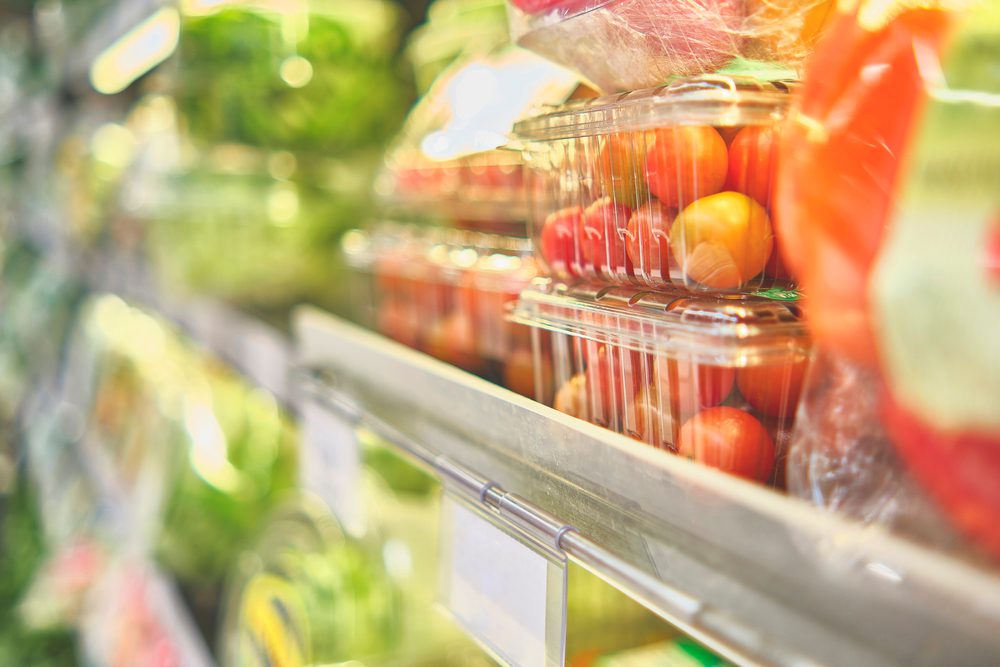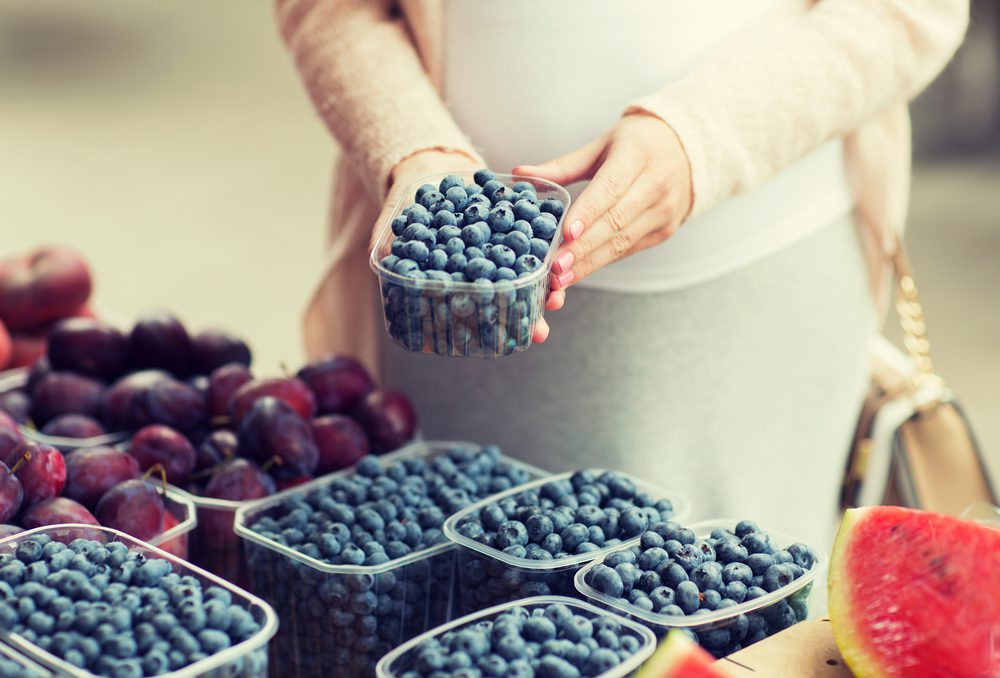What’s in YOUR grocery store cart?
Households across the US have been struck by inflation, not to mention the pandemic, with many experiencing food insecurity because of income loss. But to make matters worse, a recent survey shows that the average shopper wastes nearly $1,500 on food each year.
So how do you avoid making worthless purchases of items at grocery stores to stop wasting money on food? The answer may be obvious, though less convenient. At the end of the day, we need to get a bit more creative in order to save money at the checkout lines.
And we’ve uncovered the 7 most common grocery store items you’ve been wasting your money on. Continue reading to see if these products are on YOUR grocery list!

Name Brand Items
We’re starting with name-brand items because they’re probably the biggest money-wasters at grocery stores nowadays. Did you know that generic products usually have the same ingredients as the name brands do?
The only difference is that the name brands cost about 25-30% more! We understand that name-brand products can sometimes be of better quality than their generic counterparts. But most of the time, people can’t even tell the difference between the two.
We recommend only buying a few name-brand items, the ones we feel are truly superior in quality, and getting generic versions of everything else. By doing this, you’ll save hundreds of dollars per year.
Baked Goods
We get it…picking up some fresh-baked bread while you’re at the grocery store probably sounds AND smells better than grabbing a prepackaged loaf. But it’ll also burn a hole in your wallet in the long run.
You might be paying much more for artisanal bread or any other baked goods if you want to avoid buying products that are filled with hydrogenated oil, preservatives, and high-fructose corn syrup.
A simple solution to this would be investing in a bread machine. You can snag a fantastic one from Amazon, and you can make as many loaves of bread as you want.
And since home baking has been on the rise in the last couple of years, you’ll find no shortage of inspiration online.
Products Placed At Eye Level
Visual marketing experts say that product placement on grocery store shelves can be split into four different levels: stretch, eye, touch, and stoop.
This rule pertains particularly to the inner areas of your local grocery store: dry and packaged goods, cereals, canned food, and household supplies.
Many big named brands pay a pretty penny for placement at the eye and touch level since they’re considered to be the best spots in grocery stores.
Furthermore, statistics show that customers give the middle shelves 35% more attention than the stoop levels all the way to the bottom because they’re easier to get to.
Shorter people don’t usually look up or purchase from the stretch level because it’s way out of reach for them. At the same time, seniors or people with mobility constrictions are typically unable to stoop too low.
So because the eye and touch levels are more costly for companies, the price of the product will also be more expensive for customers. Remember this the next time you’re out shopping at your local grocery store, and pay more attention to the bottom and top shelves.
You’ll likely find items you weren’t even aware of at a much more reasonable price.

Prepackaged Fruits And Vegetables
Most packs of precut fruits and vegetables, like cauliflower, lettuce, pineapple, and watermelon, cost approximately 50 cents more per ounce than their fresh counterparts.
And while it’s true that it takes a bit more effort to wash and chop fresh fruits and veggies for ourselves, the money you would save at the grocery store is pretty significant. And if you think that frozen fruits and veggies are the way to go, think again.
Big bags will usually get freezer burn before you’ve had a chance to use it all. So half the bag of those berries will end up in the trash, along with all that money you spent! Unless you make smoothies on a regular basis, try sticking with either small bags or buying fresh.
Another good idea is to buy fresh, wash and dice, and toss handfuls of your favorite combo into individual baggies before storing them in the freezer so you’ll have ready-made mixes whenever you want.
Bottled Water
Bottled water is approximately 3,000% more costly per gallon than tap water. Buying bottled isn’t anything new in our country.
But unfortunately, it’s not only upsetting on an environmental level, considering plastic contributes to pollution and global warming, it also drains our wallets as well.
So unless you live in an area where tap water isn’t safe to drink, buying it at the grocery store is nothing but a waste of plastic AND money.
Think about it this way: a six-pack of .5 liter bottles for $7 might not sound like such a big deal, but if you were to drink one each day, you’ll spend more than $400 a year.
Your budget would look so much better if you were to get a filter for your home faucet or a filtered in-fridge water pitcher. You can also buy a reusable water bottle to carry around, too.
Dips, Spreads, and Dressings
If you’ve never had a freshly made spread, dip, or salad dressing, then you’re definitely missing out! Even though it might sound intimidating, they can easily be made with ingredients that you probably already have in your fridge.
And while there is some prep time involved, the taste will be worth it, and the cost is a fraction of what you would pay at your local grocery store. Take hummus, for instance.
A basic recipe requires just some canned garbanzo beans, tahini, extra virgin olive oil, and a squeeze of lemon juice. The ingredients are mostly budget-friendly, as well.
On the other hand, if guacamole is your go-to, you can make a super easy dip of avocado, red onion, tomato, lemon juice, salt, and pepper. A simple vinaigrette for a delicious salad is just salt, pepper, olive oil, and balsamic vinegar. Again…all kitchen staples.
Want it creamier? Add some mayo or Greek yogurt. If you get in the habit of making your own versions of these, you won’t have to deal with a whole range of unpronounceable ingredients and additives, like acids, nitrates, and benzoates. It’s a win-win!

Out-Of-Season Produce
Due to weather variations, fruits and veggies have a specific growing season. Yet they’re continuously available on a whim. So if you purchase fruits or vegetables that aren’t being grown during their biological cycle, you can expect to pay much more for them.
Have you ever bought a pint of blueberries in the summer and then, two months later, noticed that it cost a couple of dollars more for the exact same amount? That’s because, in most of our country, the blueberry season is between July and August.
You might also notice that they don’t taste the same. The reason is that produce begins to lose its nutritional value as soon as it’s plucked.
This becomes an issue if your blueberries, strawberries, or asparagus are being outsourced from farms in another area and require long transport times to reach your grocery store.
Still, if you get a craving for something that’s out of season, just purchase it frozen. And this way, you’ll still get all the flavor AND nutrients.
We hope you found this article on how to NOT waste money at grocery stores helpful. But our site has many more great tips we think you’ll enjoy. For instance, we recommend you check out: 14 Garage Sale Items That Could Secretly Be Worth a Ton








